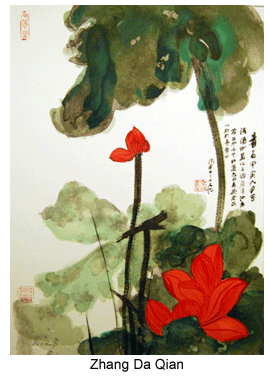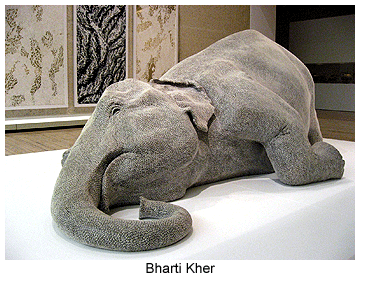- Prelude
- Hard Talk
- New Media
- Rolex : An Overview
- The age of Revivals: Neoclassical Furniture
- Democratization of the Medium No-Budget film: the Indian Context (!)
- Old Sound New Sound
- Decan Odyssey
- North East Opsis
- Russian cool breeze in hot Paris
- Around Kolkata
- Musings from Chennai
- In and around Santiniketan
- In between – from Vadodra
- A Tryst with Art in Madhya Pradesh
- Through the Looking Glass
- The Foreign Connection
- Market Insight
- Market Report
- Artist Index and Statistics
- Auction Reports
- The month that was
- Delhi Dias
- Art Bengaluru
- Mumbai Art Sighting
- Creative Impulse
- Subodh Gupta
- Pooja Iranna
- Preview
- In the News
ART news & views
Market Report
Volume: 2 Issue No: 9 Month: 10 Year: 2010
Art Market
First Half 2010
As we enter the second semester of 2010, it is due time, as results and analyses are pouring in, to take a close look at the performance of the world art-market in the first half of a year that has seen unprecedented recovery from a slump that was threatening to almost make an excuse of the secondary art market.
 The art market actually recovered its momentum in the first half of 2010a 71% growth in auction revenue from Fine Art alone! This fact has been quickly seized by the auction houses who are now predicting annual growth in three figures. But again, let us start this article on a note of caution, since this is after all a speculative figure and has been, like most speculations, been resorted to in order to reassure a still-hesitant market.
The art market actually recovered its momentum in the first half of 2010a 71% growth in auction revenue from Fine Art alone! This fact has been quickly seized by the auction houses who are now predicting annual growth in three figures. But again, let us start this article on a note of caution, since this is after all a speculative figure and has been, like most speculations, been resorted to in order to reassure a still-hesitant market.
As statistics stand till June 2010, global auction revenue from fine art amounted to $3.9 billion (€2.9 billion). One cannot deny that though this is about $ 1.1 billion (€800m) short of the peak of the first half of 2007 (the total generation during that period being almost $ 5 billion to be precise), it is nevertheless up by a healthy $ 1.6 billion (€1.2 billion ) against the first semester 2009.
So how did the market recover so quickly, when even during December 2009, the results were not at all enthusiastic?
According to art-market experts, this was mainly due to the return of investors to the top-end of the market and the buoyancy of the Asian market, with Chinese auction houses and Asian investors helping to post no-less than a rise of 158% versus the first semester 2009 in Hong Kong, and a staggering 187% in Sanghai respectively.
Since the beginning of 2010, the world's most expensive masterpieces have returned to auction rooms generating 8-figure results, including Alberto Giacometti's Walking Man II ($104.3 million) and Pablo Picasso's Nude Green Leaves and Bust ($106.5 million).
The Asian catch
The Asian figures are immensely significant in understanding the global auction trends. In fact, these staggering figures have almost forced the art-market watchdog Artprice to virtually concede that the global duopoly of Sotheby's and Christie's may be seriously challenged in the days to come, by indigenous Chinese auction houses like Poly and China Guardian. Significantly, even when one compares the Hong Kong and Sanghai markets, what emerges quite clearly is the significant growth of the latter over the formeran almost 30%. It will not be out of place to note here that through the Hong Kong market is still significantly controlled by the duopoly's Asian tentacles, the Sanghai market is protected against any global onslaught, giving a free hand to their Chinese counterparts, like the ones named previously.
The Chinese art market with total art auction revenue (TAR) of $ 431.8342 million (€322 million) in the first half of 2010, has posted almost a jump of twice the collection over the same period of 2007 $284.3 million (€212 million), the year it was taking what can best be described as tentative baby-steps. This has been achieved in a span of just three years, in-between which, the global art-market went through its worst slumps in recent times.
Artprice had to concede in its August market semester report that “While the UK and US markets were struggling to recover (in the second semester '09), Chinese auctions were steaming ahead and the country posted its best-ever semesterial total auction revenue. Indeed, the $ 384.4m (€384.4m) generated by Chinese art auctions in the second half of 2009 represented more than twice the French TAR and was substantially higher than the UK figure. Thus, before the UK recovered its composure in 2010, China was effectively in second place, just $155.6 million (€116m) behind the United States, for the second 2009 semester.
The traditional players
That is not to say that the traditional European and American players have faded out. Artprice notes that “Today, in the United-States, an artwork offered at over $100,000 has more chance of selling than a work offered at under $10,000. And yet the high-end of the market was in a critical condition towards the end of 2008 with more than 38% of works failing to sell. In 2010, the bought-in rate for works above the $100,000 line has fallen to 27%, while that for works above $1m is only 20%.”
In line with this market trend, the historical duopoly, Christie's and Sotheby's, have posted first-half revenue figures up 67% and 140% respectively versus their Fine Art revenue for the first-half of 2009. In the context of a dynamic market, these figures seem perfectly natural. Nevertheless, a closer look does not project quite the rosy picture of what the duopoly claim.
Artprice's article makes it clear “The latest combined revenue figure for the two auction houses is 25% lower than in (the first half of) 2007 and 20% below the combined 2008 figure. Compared to (the first half of) 2006, i.e. before the market started its final ascension in 2008/2009, the auction revenue is only 9% up for Christie's and 0.5% up for Sotheby's. Moreover, although the two auction houses have posted market share gains, these gains are substantially dependent on “major” auction results: more than 340 hammer prices above the $1m line, representing 62% of their combined sales.
By the way, it is worth noting that between 2002 and 2008, the Christie's-and-Sotheby's duo never left more than 30% of the Fine Art auction market to their competitors. Since July 2008, this figure has been rising and in (the second half of) 2009 the combined market share of the competitors amounted to (only) 46% of global auction revenue” -- which means, within the span of a year, the combined market of the duopoly fell by 24%. Given the sinew and the infrastructure that the two have over their competitors, this is a significant, if not a dangerous drop.
And this has mainly been because of the Chinese auction houses since other Western auctioneers have not managed to take advantage of the gradual dilution of the two-headed market hegemony and the emergence of a highly globalised art market.
Why?
Phillips de Pury, in constant decline since 2001, is today the number five auction company in the world behind the Chinese giants Poly and China Guardian. Phillips, has not generated more than 4% of the global market share since 2002. In the first half of 2010, the British auctioneer was responsible for just 2% of global art auction revenue.
In France, supposed to be the capital of the world art-mart, as also the Mecca of art par say, the situation isn't any better. Artcurial, which is the first French auction house to feature in the world ranking system in terms of revenue, ranks 9th, falling behind the Austrian company Dorotheum and a long way behind the Chinese and English houses. Compare this with the fact that in 2006, there were six French auction houses in the global top 30. The figure today is just three. Half that is. Incidentally, that shadow of Communist China again looms large. Five auction companies in the world's top 15 are at the moment Chinese, and their market share is steadily growing.
The Indian Bubble bath
Artprice concedes that “Behind China, the other significant emerging force on the international art market is India. The demand is global and fast-growing, substantially fuelled by the speculative incentive to earn attractive gains on quick turnarounds.”
The main players as of now are the sculptor Anish Kapoor, the painters Subodh Gupta and Atul Dodiya, followed by Bharti Kher, Jitish Kallat and Shibu Natesan. Art market analysists put Kapoor as the biggest example  of the 'Indian El Dorado', describing him as a sculptor who was “First seen on the secondary market in 1980's at the price of $20,651 (€15,400)” and who has since added “two more zeros over the last four years, particularly concerning his large alabaster works.”
of the 'Indian El Dorado', describing him as a sculptor who was “First seen on the secondary market in 1980's at the price of $20,651 (€15,400)” and who has since added “two more zeros over the last four years, particularly concerning his large alabaster works.”
The 44-year-old Subodh Gupta was absent from international auction rooms until four years ago. And today a US-based art-mart watchdog does not mince two words before comparing him to a Damien Hirst in terms of fame and rocketing prices! In 2005, Sotheby's sold his painting Fisherman for $13,000 (€10,700). In 2007, the prices of his paintings had moved into a completely different sphere and were changing hands for between $ 174,343 and $ 375,508! Hong Kong, London or New York, even in France, name the city and one will find collectors who are eager to acquire a Subodh Gupta!
Art market insiders are also taking serious note of Atul Dodiya, Bharti Kher, TV Santosh and Jitish Kallat. Shibu Natesan is also in the fray.
In this context, the potential investor may also take note that in July 2008, the increase of Artprice index for the Indian contemporary artists category over the previous 10 years stood at no less than +3230%! A surprising figure, that, fuelled by the speculations that the half-dozen has achieved.
However, one should not end before noting that at Sotheby's, the combined auction sales for Indian and Southeast Asian art during period March 2009 and March 2010 raised a total of $15.2 million. But a major chunk of this was collected only in March 2010 $ 8.2 million. Though the confidence in Indian artworks is on the rise again, and a recent report by ArtTactic claims that the overall Indian Art Market Confidence Indicator has risen 26% since October 2009, it also notes that the Speculation Barometer for Modern Indian Art is now at 6.3, up from 4.9 in October 2009. This is the highest reading since ArtTactic started its survey in May 2007. A scale of 6.3 indicates that speculation is in a very healthy stage.
But speculations are speculations and one can go to any length to raise the benchmark. We may have come far from the days of Harshad Mehta, but let us not forget the example of Lehman Brothers.